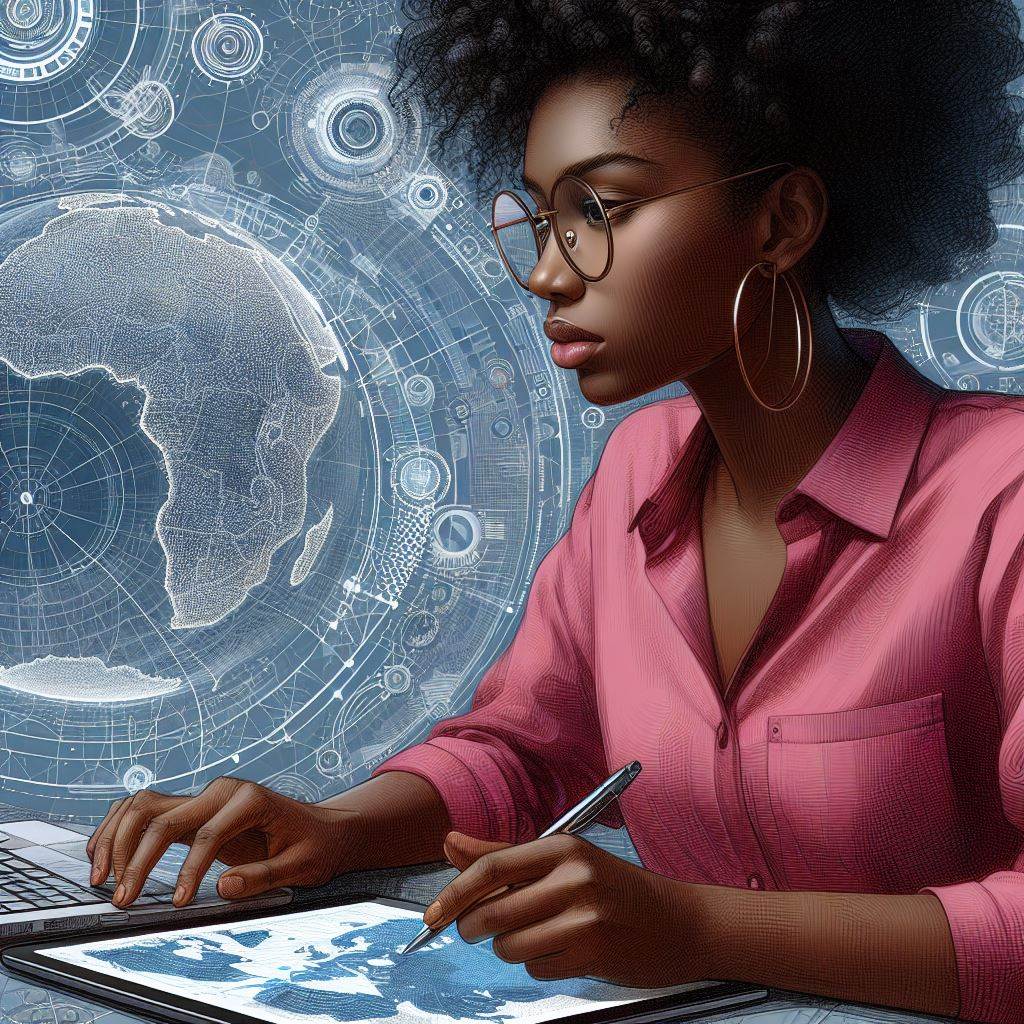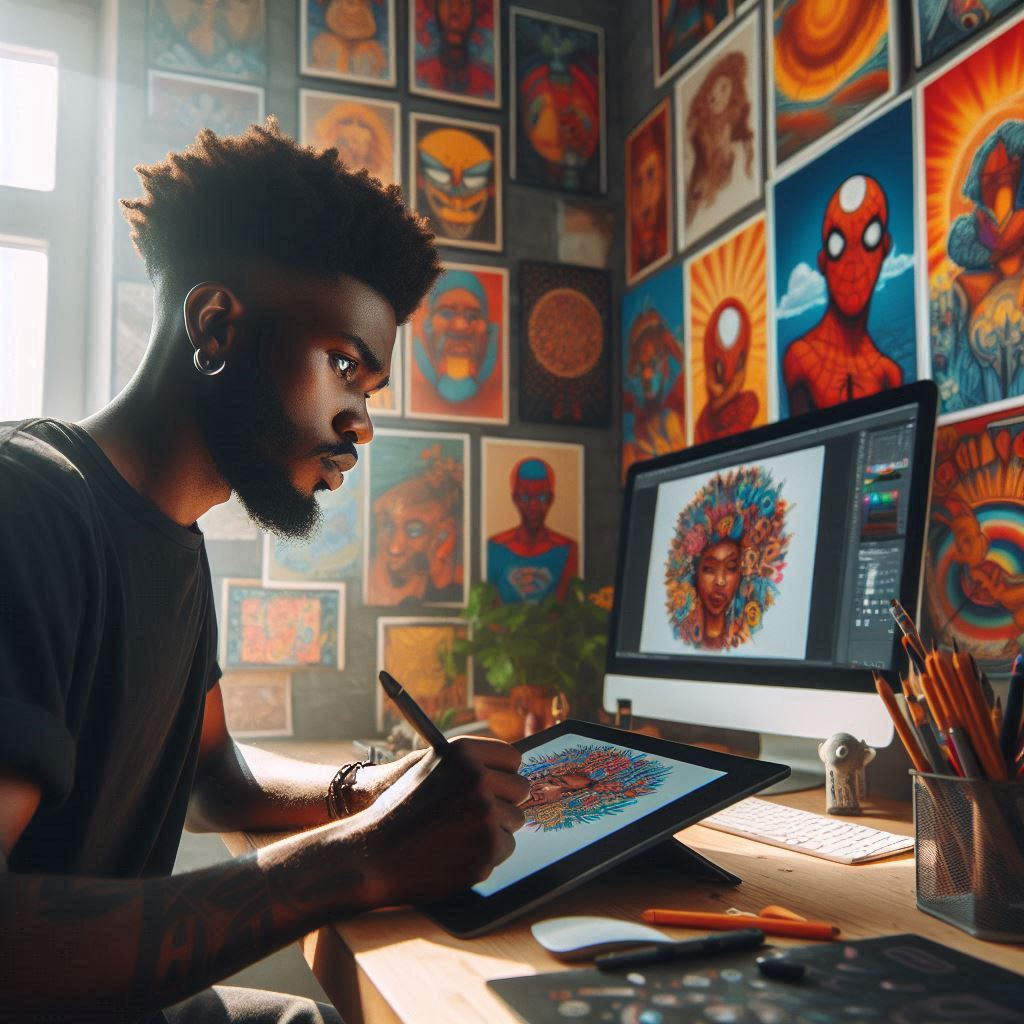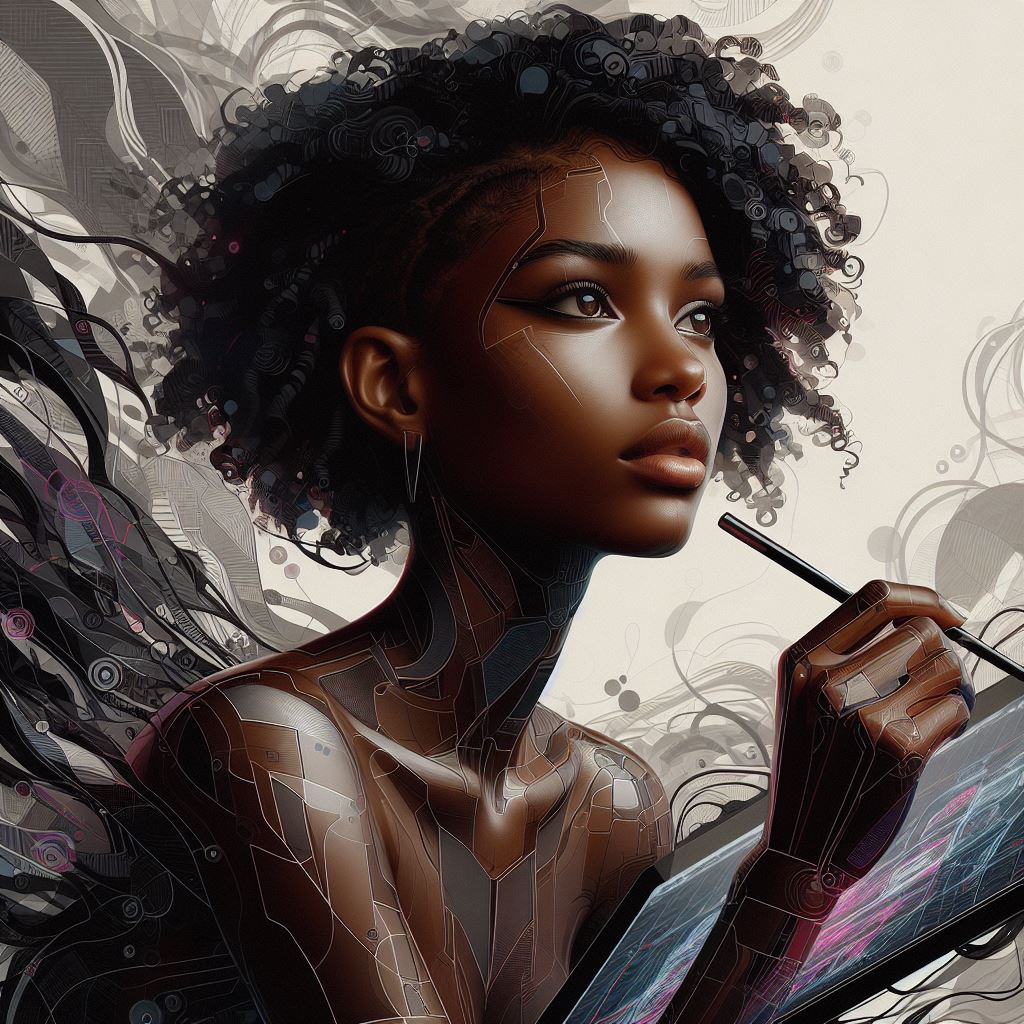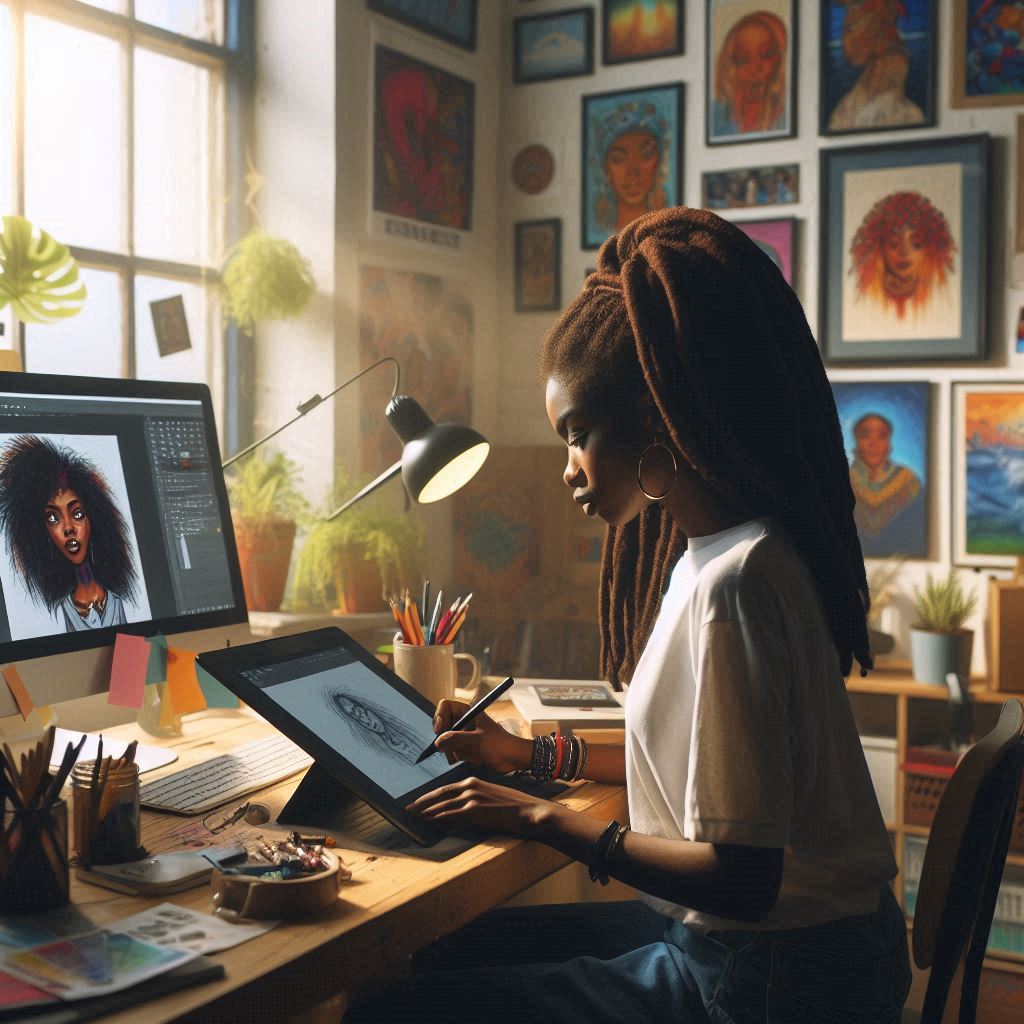Introduction
Nigerian art is thriving and gaining momentum in the global art scene.
Contemporary Nigerian artists are increasingly celebrated worldwide for their unique styles and perspectives.
The country’s rich cultural heritage inspires vibrant and diverse artistic expressions.
Nigerian art showcases a blend of traditional and modern elements, captivating international audiences.
Art fairs and exhibitions across the globe now prominently feature Nigerian artists.
Their works highlight critical social issues, cultural narratives, and innovative techniques.
The global art market has seen a growing interest in African art, with Nigerian artists leading the charge.
Auction houses report rising prices for Nigerian art pieces, reflecting their increasing value.
International galleries are recognizing the talent emerging from Nigeria, providing platforms for exposure.
The future of Nigerian art looks promising as it continues to captivate and influence the global art community.
This growing recognition underscores the importance of Nigerian art in the broader cultural dialogue.
Historical Perspective
The rich artistic history of Nigeria, including traditional art forms and influences.
Exploring Nigeria’s rich artistic history unveils a tapestry woven with traditional art forms and diverse influences.
Traditional Nigerian art, such as Benin bronze sculptures and Yoruba wood carvings, reflects intricate craftsmanship and cultural significance.
These art forms served as expressions of religious beliefs, social hierarchies, and communal identities within Nigerian societies.
The impact of colonialism on Nigerian art and how it has evolved over time.
Colonialism imposed significant changes on Nigerian art, introducing Western influences and disrupting indigenous artistic practices.
The influx of European missionaries and traders led to the decline of some traditional art forms and the emergence of new styles influenced by Western aesthetics.
However, Nigerian artists adapted to colonial influences, incorporating elements of European art while maintaining their cultural identity.
Post-colonial Nigeria witnessed a resurgence of interest in traditional art forms, fueled by a growing sense of national pride and cultural revival.
Contemporary Nigerian artists draw inspiration from both traditional and modern sources, creating artworks that reflect the complexities of Nigerian society.
The impact of colonialism on Nigerian art has been profound, shaping its evolution and influencing artistic expressions over time.
Despite colonial legacies, Nigerian art continues to thrive, embracing global influences while preserving its rich cultural heritage.
In fact, Nigeria’s artistic heritage is a testament to its resilience and creativity. By acknowledging its past and embracing the future, Nigerian art remains vibrant and relevant on the global stage.
Read: Exploring Semiotics in Communication Arts
Emerging Trends
Recent trends in Nigerian art, such as the use of new media and technology.
Recent trends in Nigerian art showcase a dynamic fusion of tradition and innovation, embracing new media and technology.
Nigerian artists are exploring diverse mediums, from digital art to multimedia installations, pushing boundaries and challenging conventions.
The use of technology has opened up new avenues for creative expression, allowing artists to experiment with interactive and immersive artworks.
Social media platforms serve as virtual galleries, enabling artists to reach global audiences and engage with art enthusiasts worldwide.
How Nigerian artists are incorporating global influences into their work while maintaining their cultural identity
Despite embracing modern techniques, Nigerian artists remain deeply rooted in their cultural heritage, drawing inspiration from traditional motifs and themes.
Global influences permeate Nigerian art, reflecting a vibrant exchange of ideas and perspectives across borders.
Many artists blend international styles with indigenous aesthetics, creating hybrid forms that resonate with both local and global audiences.
This synthesis of influences enriches Nigerian art, contributing to its diverse and evolving landscape.
Nigerian artists navigate between tradition and modernity, seamlessly integrating global trends into their work while preserving their cultural identity.
By embracing innovation while honoring their heritage, Nigerian artists are poised to make a significant impact on the global art scene.
Generally, the future of Nigerian art is characterized by innovation, diversity, and a deep connection to cultural roots. As artists continue to explore new media and engage with global influences, Nigerian art will continue to captivate audiences worldwide.
Read: Research Areas in African and Asian Studies
Challenges
Address the challenges that Nigerian artists face in gaining visibility and recognition on the global stage.
Nigerian artists encounter numerous obstacles when striving for visibility and recognition on the global stage. These challenges range from systemic issues to resource constraints.
The lack of adequate infrastructure poses significant hurdles. Many artists struggle to find modern studio spaces equipped with necessary tools and facilities.
Access to materials is another pressing issue. Artists often find themselves limited by the availability and affordability of quality art supplies.
Financial constraints further impede artistic development. Limited funding opportunities restrict artists’ ability to produce and exhibit their work.
Government support for the arts in Nigeria is often insufficient. Policies and funding to nurture artistic talent and promote cultural development are lacking.
Moreover, art institutions face challenges in providing comprehensive support to emerging artists. Mentorship programs and training opportunities are not always readily available.
The education system also plays a crucial role. Many aspiring artists lack access to quality art education and guidance to hone their skills.
Issues such as limited resources, lack of infrastructure, and the need for more support from the government and art institutions
Financial constraints restrict artists’ ability to pursue their creative endeavors fully. This includes funding for materials, exhibitions, and professional development.
The lack of infrastructure, such as modern studio spaces and exhibition venues, limits artists’ opportunities to showcase their work.
Government support for the arts is vital for fostering a thriving artistic community. However, in Nigeria, this support is often inadequate.
Art institutions play a crucial role in nurturing talent and providing resources. However, they too face challenges in meeting the diverse needs of artists.
Improving the art education system is essential for cultivating the next generation of Nigerian artists. Access to quality training and mentorship programs is crucial.
Furthermore, Nigerian artists face limited exposure to international markets and audiences. Overcoming this challenge requires strategic initiatives to promote their work globally.
Cultural stereotypes and biases can also hinder Nigerian artists’ recognition on the global stage. Addressing these prejudices is vital for ensuring fair representation and appreciation of their work.
Therefore, Nigerian artists face multifaceted challenges in gaining visibility and recognition globally. Addressing these issues demands collaborative efforts from government, art institutions, and the wider community.
By investing in infrastructure, providing financial support, and fostering artistic talent, Nigeria can overcome these obstacles and position its artists on the global stage.
Transform Your Career with Expert Guidance
Get personalized mentorship consulting that’s tailored to your unique path. Our expert advice is actionable and exclusive.
Get StartedRead: Innovations in Language Arts Teaching Methods
You Might Also Like: Scholarships for Music Students in Nigeria
You Might Also Like: The Role of Museums in Nigerian History Education
Delve into the Subject: Overview of European Language Studies in Nigerian Schools
Explore Further: Challenges in Arabic and Islamic Studies Nigeria
Opportunities
The opportunities for Nigerian artists to expand their reach and impact in the global art world.
Nigerian artists have a vast array of opportunities to expand their reach and impact on the global art stage. Collaborations with international artists provide avenues for exposure and growth.
Participating in global art events like biennales and art fairs offers Nigerian artists significant visibility. These platforms attract diverse audiences and facilitate networking with industry professionals.
International collaborations foster cultural exchange and innovation. By working with artists from different backgrounds, Nigerian artists gain new perspectives and insights, enriching their artistic practice.
Exhibiting artwork in international galleries exposes Nigerian artists to new markets and collectors. This exposure can lead to increased demand for their work and opportunities for representation abroad.
How collaborations with international artists and participation in global art events can help Nigerian artists gain exposure
Artist residencies provide immersive experiences in foreign cultures, inspiring fresh ideas and approaches. These residencies also enable artists to establish connections and collaborations with peers from around the world.
Online platforms offer Nigerian artists global visibility and accessibility. Social media, art marketplaces, and digital galleries provide avenues for showcasing and selling artwork to a worldwide audience.
Engaging with international art critics and scholars contributes to the discourse surrounding Nigerian art. Critical acclaim and scholarly recognition elevate an artist’s profile on the global stage.
Participation in international art competitions and awards raises the profile of Nigerian artists. Winning or being shortlisted for prestigious awards brings attention to their work and talent.
Cultural diplomacy initiatives promote Nigerian art on the world stage. Collaborations between governments, cultural institutions, and artists facilitate exhibitions and cultural exchanges, enhancing Nigeria’s cultural diplomacy efforts.
Networking with collectors, curators, and gallery owners during international events fosters long-term relationships. These connections can lead to exhibition opportunities, representation, and collaborations with global partners.
Read: Communication Arts and Social Media Influence

Uncover the Details: Independence Struggles in Nigerian History Studies
The Role of Education
The importance of art education in nurturing the next generation of Nigerian artists.
Education plays a pivotal role in shaping the future of Nigerian art in a global context. By nurturing young talent, art education ensures the continuity and evolution of Nigeria’s vibrant artistic heritage.
Art schools and workshops provide aspiring artists with essential skills, resources, and opportunities.
Art education begins with fostering creativity from a young age. Schools that incorporate art into their curricula encourage students to explore and express their ideas. This early exposure helps identify and nurture potential talent, setting a strong foundation for future artists.
Specialized art schools play a crucial role in honing artistic skills. These institutions offer structured programs that cover various art forms and techniques. They provide a comprehensive education, from traditional practices to contemporary methods, ensuring well-rounded development.
How art schools and workshops can provide young artists with the skills and resources they need to succeed in a global context
Workshops and mentorship programs supplement formal education by offering hands-on experience. They allow young artists to learn directly from established professionals.
This interaction bridges the gap between theoretical knowledge and practical application, fostering confidence and expertise.
Exposure to diverse artistic styles and practices is essential for young artists. Art schools and workshops often invite international artists to conduct seminars and exhibitions. These interactions broaden students’ perspectives, preparing them for a global audience.
Access to resources and materials is vital for artistic growth. Art schools equip students with studios, tools, and materials, enabling them to experiment and innovate. This access fosters a creative environment where ideas can flourish and transform into impactful artworks.
Collaborations between educational institutions and the art industry enhance learning experiences.
Partnerships with galleries, museums, and cultural organizations provide students with real-world exposure. These collaborations often result in exhibitions and projects that showcase students’ work to a broader audience.
Technology integration in art education opens new avenues for creativity. Digital art, animation, and multimedia courses equip students with contemporary skills. These skills are essential for navigating the increasingly digital global art landscape.
See Related Content: Role of Nigerian Languages in Cultural Identity
Conclusion
Nigerian art holds a bright future in the global context, driven by unique creativity and rich cultural heritage.
Nigerian artists are increasingly gaining international recognition and acclaim.
Their works blend traditional and contemporary elements, offering fresh perspectives on global issues.
The global art market’s interest in African art, especially Nigerian, continues to grow.
Major art fairs and galleries worldwide showcase Nigerian talent, underscoring its significance.
Rising auction prices for Nigerian artworks highlight their increasing value and demand.
Support and appreciation for Nigerian artists are crucial for sustaining this momentum.
By recognizing their contributions, we enrich the global art scene with diverse and vibrant narratives.
Investing in Nigerian art ensures the preservation and celebration of a vital cultural legacy.
Encourage continued patronage of Nigerian artists, fostering their growth and global influence.
The future of Nigerian art is promising, with endless possibilities for innovation and impact.
Let’s champion Nigerian art’s role in shaping the global artistic landscape.




